- Home
- Bill Bryson
At Home
At Home Read online
At Home
Bill Bryson
ALSO BY BILL BRYSON
The Lost Continent
Mother Tongue
Neither Here Nor There
Made in America
Notes from a Small Island
A Walk in the Woods
I’m a Stranger Here Myself
In a Sunburned Country
Bryson’s Dictionary of Troublesome Words
Bill Bryson’s African Dictionary
A Short History of Nearly Everything
A Short History of Nearly Everything: Special Illustrated Edition
The Life and Times of the Thunderbolt Kid
Bryson’s Dictionary for Writers and Editors
DOUBLEDAY
Copyright © 2010 by Bill Bryson
All rights reserved. Published in the United States by Doubleday, a division of Random House, Inc., New York.
www.doubleday.com
DOUBLEDAY and the DD colophon are registered trademarks of Random House, Inc.
Originally published in Great Britain by Doubleday, an imprint of Transworld Publishers, a Random House Group Company, London.
Library of Congress Cataloging-in-Publication Data
Bryson, Bill.
At home : a short history of private life / Bill Bryson.
p. cm.
1. Dwellings—Psychological aspects. 2. Dwellings—Environmental aspects. 3. Rooms—Psychological aspects. 4. Rooms—Environmental aspects. I. Title.
GT165.5.B79 2010
643′.1—dc22
2010004008
eISBN: 978-0-385-53359-1
v3.1_r1
To Jesse and Wyatt
• CONTENTS •
Cover
Other Books by This Author
Title Page
Copyright
Dedication
INTRODUCTION
Chapter I THE YEAR
Chapter II THE SETTING
Chapter III THE HALL
Chapter IV THE KITCHEN
Chapter V THE SCULLERY AND LARDER
Chapter VI THE FUSE BOX
Chapter VII THE DRAWING ROOM
Chapter VIII THE DINING ROOM
Chapter IX THE CELLAR
Chapter X THE PASSAGE
Chapter XI THE STUDY
Chapter XII THE GARDEN
Chapter XIII THE PLUM ROOM
Chapter XIV THE STAIRS
Chapter XV THE BEDROOM
Chapter XVI THE BATHROOM
Chapter XVII THE DRESSING ROOM
Chapter XVIII THE NURSERY
Chapter XIX THE ATTIC
ACKNOWLEDGMENTS
BIBLIOGRAPHY
ILLUSTRATION CREDITS
About the Author
INTRODUCTION
Some time after my wife and I moved into a former Church of England rectory in a village of tranquil anonymity in Norfolk, in the easternmost part of England, I had occasion to go up into the attic to look for the source of a slow but mysterious drip. As there are no stairs to the attic in our house, the process involved a tall stepladder and much unseemly wriggling through a ceiling hatch, which was why I had not been up there before (or have returned with any enthusiasm since).
When I did finally flop into the dusty gloom and clambered to my feet, I was surprised to find a secret door, not visible from anywhere outside the house, in an external wall. The door opened easily and led out onto a tiny rooftop space, not much larger than a tabletop, between the front and back gables of the house. Victorian houses are often a collection of architectural bewilderments, but this one was starkly unfathomable: why an architect had troubled to put in a door to a space so lacking in evident need or purpose was beyond explanation, but it did have the magical and unexpected effect of providing the most wonderful view.
It is always quietly thrilling to find yourself looking at a world you know well but have never seen from such an angle before. I was perhaps fifty feet above the ground, which in mid-Norfolk more or less guarantees a panorama. Immediately in front of me was the ancient flint church to which our house was once an adjunct. Beyond, down a slight incline and slightly separate from church and rectory, was the village to which both belonged. In the distance in the other direction was Wymondham Abbey, a heap of medieval splendor commanding the southern skyline. In a field in the middle distance a tractor rumbled and drew straight lines in the soil. All else in every direction was quiet, agreeable, timeless English countryside.
What gave all this a certain immediacy was that just the day before I had walked across a good part of this view with a friend named Brian Ayers. Brian had just retired as the county archaeologist, and may know more about the history and landscape of Norfolk than anyone alive. He had never been to our village church, and was eager to have a look. It is a handsome and ancient building, older than Notre Dame in Paris and about the same vintage as Chartres and Salisbury cathedrals. But Norfolk is full of medieval churches—it has 659 of them, more per square mile than anywhere else in the world—so any one is easily overlooked.
“Have you ever noticed,” Brian asked as we stepped into the churchyard, “how country churches nearly always seem to be sinking into the ground?” He pointed out how this one stood in a slight depression, like a weight placed on a cushion. The church foundations were about three feet below the churchyard around it. “Do you know why that is?”
I allowed, as I often do when following Brian around, that I had no idea.
“Well, it isn’t because the church is sinking,” Brian said, smiling. “It’s because the churchyard has risen. How many people do you suppose are buried here?”
I glanced appraisingly at the gravestones and said, “I don’t know. Eighty? A hundred?”
“I think that’s probably a bit of an underestimate,” Brian replied with an air of kindly equanimity. “Think about it. A country parish like this has an average of 250 people in it, which translates into roughly a thousand adult deaths per century, plus a few thousand more poor souls that didn’t make it to maturity. Multiply that by the number of centuries that the church has been there and you can see that what you have here is not eighty or a hundred burials, but probably something more on the order of, say, twenty thousand.”
This was, bear in mind, just steps from my front door. “Twenty thousand?” I said.
He nodded matter-of-factly. “That’s a lot of mass, needless to say. It’s why the ground has risen three feet.” He gave me a moment to absorb this, then went on: “There are a thousand parishes in Norfolk. Multiply all the centuries of human activity by a thousand parishes and you can see that you are looking at a lot of material culture.” He considered the several steeples that featured in the view. “From here you can see into perhaps ten or twelve other parishes, so you are probably looking at roughly a quarter of a million burials right here in the immediate landscape—all in a place that has never been anything but quiet and rural, where nothing much has ever happened.”
All this was Brian’s way of explaining how a bucolic, lightly populated county like Norfolk could produce twenty-seven thousand archaeological finds a year, more than any other county in England. “People have been dropping things here for a long time—since long before England was England.” He showed me a map of all the known archaeological finds in our parish. Nearly every field had yielded something—Neolithic tools, Roman coins and pottery, Saxon brooches, Bronze Age graves, Viking farmsteads. Just beyond the edge of our property in 1985 a farmer crossing a field found a rare, impossible-to-misconstrue Roman phallic pendant.
To me that was, and remains, an amazement: the idea of a man in a toga, standing on what is now the edge of my land, patting himself all over, and realizing with consternation that he has lost his treasured keepsake, which then lay in the soil for seventeen or
eighteen centuries—through endless generations of human activity; through the comings and goings of Saxons, Vikings, and Normans; through the rise of the English language, the birth of the English nation, the development of continuous monarchy and all the rest—before finally being picked up by a late-twentieth-century farmer, presumably with a look of consternation of his own.
Now as I stood on the roof of my house, taking in this unexpected view, it struck me how rather glorious it was that in two thousand years of human activity the only thing that had stirred the notice of the outside world even briefly was the finding of a Roman phallic pendant. The rest was just centuries and centuries of people quietly going about their daily business—eating, sleeping, having sex, endeavoring to be amused—and it occurred to me, with the forcefulness of a thought experienced in 360 degrees, that that’s really what history mostly is: masses of people doing ordinary things. Even Einstein will have spent large parts of his life thinking about his holidays or new hammock or how dainty was the ankle on the young lady alighting from the tram across the street. These are the sorts of things that fill our lives and thoughts, and yet we treat them as incidental and hardly worthy of serious consideration. I don’t know how many hours of my school years were spent considering the Missouri Compromise or the War of the Roses, but it was vastly more than I was ever encouraged or allowed to give to the history of eating, sleeping, having sex, or endeavoring to be amused.
So I thought it might be interesting, for the length of a book, to consider the ordinary things in life, to notice them for once and treat them as if they were important, too. Looking around my house, I was startled and somewhat appalled to realize how little I knew about the domestic world around me. Sitting at the kitchen table one afternoon, playing idly with the salt and pepper shakers, it occurred to me that I had absolutely no idea why, out of all the spices in the world, we have such an abiding attachment to those two. Why not pepper and cardamom, say, or salt and cinnamon? And why do forks have four tines and not three or five? There must be reasons for these things. Dressing, I wondered why all my suit jackets have a row of pointless buttons on every sleeve. I heard a reference on the radio to someone paying for room and board, and realized that when people talk about room and board, I have no idea what the board is that they are talking about. Suddenly the house seemed a place of mystery to me.
So I formed the idea to make a journey around it, to wander from room to room and consider how each has featured in the evolution of private life. The bathroom would be a history of hygiene, the kitchen of cooking, the bedroom of sex and death and sleeping, and so on. I would write a history of the world without leaving home.
The idea had a certain appeal, I must say. I had recently done a book in which I tried to understand the universe and how it is put together, which was a bit of an undertaking, as you will appreciate. So the idea of dealing with something as neatly bounded and cozily finite as an old rectory in an English village had obvious attractions. Here was a book I could do in carpet slippers.
In fact it was nothing like that. Houses are amazingly complex repositories. What I found, to my great surprise, is that whatever happens in the world—whatever is discovered or created or bitterly fought over—eventually ends up, in one way or another, in your house. Wars, famines, the Industrial Revolution, the Enlightenment—they are all there in your sofas and chests of drawers, tucked into the folds of your curtains, in the downy softness of your pillows, in the paint on your walls and the water in your pipes. So the history of household life isn’t just a history of beds and sofas and kitchen stoves, as I had vaguely supposed it would be, but of scurvy and guano and the Eiffel Tower and bedbugs and body-snatching and just about everything else that has ever happened. Houses aren’t refuges from history. They are where history ends up.
I hardly need point out that history of any kind tends to sprawl. In order to fit the story of private life into a single volume, it was obvious from the outset that I would have to be painfully selective. So, although I do venture into the distant past from time to time (you can’t talk about baths without talking about Romans, for one thing), what follows mostly concentrates on events of the last 150 years or so, when the modern world was really born—coincidentally just the period that the house we are about to wander through has existed.
We are so used to having a lot of comfort in our lives—to being clean, warm, and well fed—that we forget how recent most of that is. In fact, achieving these things took forever, and then they mostly came in a rush. How that happened when it did, and why it took so long to get it, is what the following pages are all about.
Though I have not identified the village in which the Old Rectory stands, I should note that the house is real, as are (or were) the people mentioned in relation to it. I should also note that the passage referring to the Reverend Thomas Bayes in Chapter I appeared in slightly different form in an introduction I wrote for Seeing Further: The Story of Science and the Royal Society.
Interior view of Joseph Paxton’s ethereal Crystal Palace at the Great Exhibition of 1851. These gates can still be seen in Kensington Gardens. (photo credit 1.1)
• CHAPTER I •
THE YEAR
I
In the autumn of 1850, in Hyde Park in London, there arose a most extraordinary structure: a giant iron-and-glass greenhouse covering nineteen acres of ground and containing within its airy vastness enough room for four St. Paul’s Cathedrals. For the short time of its existence, it was the biggest building on Earth. Known formally as the Palace of the Great Exhibition of the Works of Industry of All Nations, it was incontestably magnificent, but all the more so for being so sudden, so startlingly glassy, so gloriously and unexpectedly there. Douglas Jerrold, a columnist for the weekly magazine Punch, dubbed it the Crystal Palace, and the name stuck.
It had taken just five months to build. It was a miracle that it was built at all. Less than a year earlier it had not even existed as an idea. The exhibition for which it was conceived was the dream of a civil servant named Henry Cole, whose other principal claim to history’s attention is as the inventor of the Christmas card (as a way of encouraging people to use the new penny post). In 1849, Cole visited the Paris Exhibition—a comparatively parochial affair, limited to French manufacturers—and became keen to try something similar in England, but grander. He persuaded many worthies, including Prince Albert, to get excited about the idea of a great exhibition, and on January 11, 1850, they held their first meeting with a view to opening on May 1 of the following year. This gave them slightly less than fifteen months to design and erect the largest building ever envisioned, attract and install tens of thousands of displays from every quarter of the globe, fit out restaurants and restrooms, employ staff, arrange insurance and police protection, print up handbills, and do a million other things, in a country that wasn’t at all convinced it wanted such a costly and disruptive production in the first place. It was a patently unachievable ambition, and for the next several months they patently failed to achieve it. In an open competition, 245 designs for the exhibition hall were submitted. All were rejected as unworkable.
Facing disaster, the committee did what committees in desperate circumstances sometimes do: it commissioned another committee with a better title. The Building Committee of the Royal Commission for the Great Exhibition of the Works of Industry of All Nations consisted of four men—Matthew Digby Wyatt, Owen Jones, Charles Wild, and the great engineer Isambard Kingdom Brunel—and a single instruction, to come up with a design worthy of the greatest exhibition in history, to begin in ten months, within a constrained and shrunken budget. Of the four committee members, only the youthful Wyatt was a trained architect, and he had not yet actually built anything; at this stage of his career he made his living as a writer. Wild was an engineer whose experience was almost exclusively with boats and bridges. Jones was an interior decorator. Only Brunel had experience with large-scale projects. He was indubitably a genius but an unnerving one, as it nearly always took e
pic infusions of time and cash to find a point of intersection between his soaring visions and an achievable reality.
The structure the four men came up with now was a thing of unhappy wonder. A vast, low, dark shed of a building, pregnant with gloom, with all the spirit and playfulness of an abattoir, it looked like something designed in a hurry by four people working separately. The cost could scarcely be calculated, but it was almost certainly unbuildable anyway. Construction would require thirty million bricks, and there was no guarantee that such a number could be acquired, much less laid, in time. The whole was to be capped off by Brunel’s contribution: an iron dome two hundred feet across—a striking feature, without question, but rather an odd one on a one-story building. No one had ever built such a massive thing of iron before, and Brunel couldn’t of course begin to tinker and hoist until there was a building beneath it—and all of this to be undertaken and completed in ten months, for a project intended to stand for less than half a year. Who would take it all down afterward and what would become of its mighty dome and millions of bricks were questions too uncomfortable to consider.
Into this unfolding crisis stepped the calm figure of Joseph Paxton, head gardener of Chatsworth House, principal seat of the Duke of Devonshire (but located in that peculiar English way in Derbyshire). Paxton was a wonder. Born into a poor farming family in Bedfordshire in 1803, he was sent out to work as an apprentice gardener at the age of fourteen; he so distinguished himself that within six years he was running an experimental arboretum at the new and prestigious Horticultural Society (soon to become the Royal Horticultural Society) in West London—a startlingly responsible job for someone who was really still just a boy. There one day he fell into conversation with the Duke of Devonshire, who owned neighboring Chiswick House and rather a lot of the rest of the British Isles—some two hundred thousand acres of productive countryside spread beneath seven great stately homes. The duke took an instant shine to Paxton, not so much, it appears, because Paxton showed any particular genius as because he spoke in a strong, clear voice. The duke was hard of hearing and appreciated clarity of speech. Impulsively, he invited Paxton to be head gardener at Chatsworth. Paxton accepted. He was twenty-two years old.

 Notes from a Small Island
Notes from a Small Island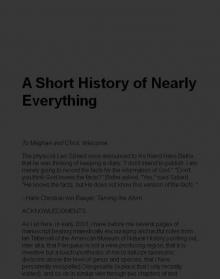 A Short History of Nearly Everything
A Short History of Nearly Everything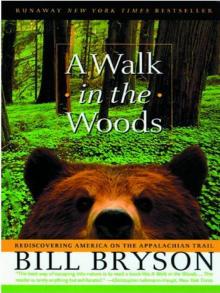 A Walk in the Woods
A Walk in the Woods I'm a Stranger Here Myself
I'm a Stranger Here Myself The Mother Tongue
The Mother Tongue Shakespeare
Shakespeare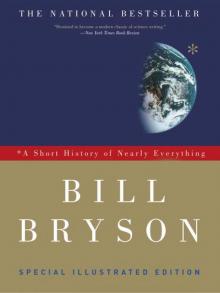 A Short History of Nearly Everything: Special Illustrated Edition
A Short History of Nearly Everything: Special Illustrated Edition The Best American Travel Writing 2016
The Best American Travel Writing 2016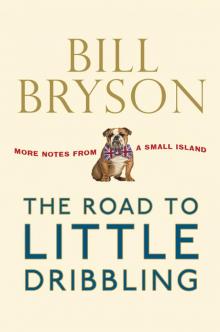 The Road to Little Dribbling
The Road to Little Dribbling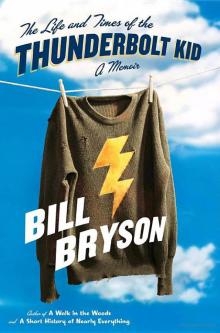 The Life And Times Of The Thunderbolt Kid: A Memoir (v5.0)
The Life And Times Of The Thunderbolt Kid: A Memoir (v5.0) Made In America
Made In America Seeing Further
Seeing Further Shakespeare: The World as Stage
Shakespeare: The World as Stage The Life and Times of the Thunderbolt Kid
The Life and Times of the Thunderbolt Kid At Home
At Home Bryson's Dictionary For Writers And Editors (v5.0)
Bryson's Dictionary For Writers And Editors (v5.0) Neither Here Nor There
Neither Here Nor There Bill Bryson's African Diary
Bill Bryson's African Diary